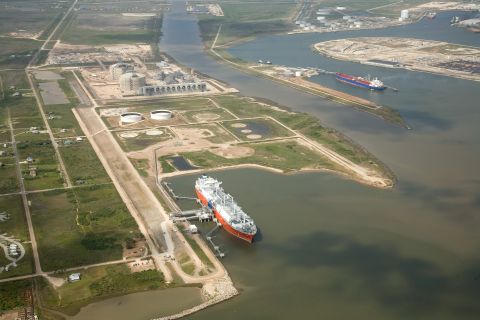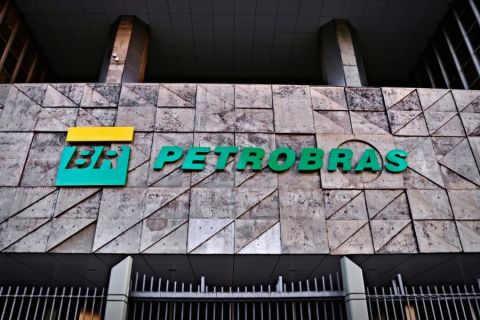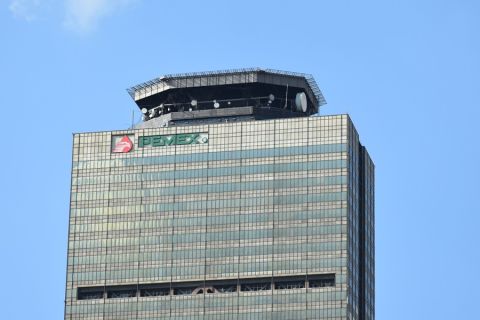In its enormity, OTC is able to offer a technical session, industry breakfast, topical luncheon, or panel discussion on a broad range of topics. At the 2009 conference last week, there were interesting sessions on drilling and completion, seismic visualization, subsea systems, pre-salt, unconventional oil and gas, risers, flow assurance, and a host of other technologies. Additional sessions focused on risk analysis and its application in different facets of the industry. And as is always the case these days, there were several sessions addressing the challenges of working in the arctic, including one on the Sakhalin 1 project and another on arctic exploration, production, and transportation. There was also an industry breakfast on the subject of arctic challenges and a topical lunch titled, “Arctic, the next frontier.” DNV chose the occasion to publicize its latest joint industry project (JIP), which aims to develop best practices for arctic offshore structures. This JIP is one of many the company in involved with on the subject of arctic operations. According to a press release the company put out at the show, DNV is kicking off this JIP to improve existing industry guidelines for the safe design of both fixed and floating structures in arctic offshore regions. Several of the major oil and gas players have committed themselves to the endeavor, which will result in the development of recommended practice for ice effects on offshore structures. Today, DNV said, the most important standard for arctic offshore structures is ISO 19906. The problem the industry is faced with, according to Gus Cammaert, DNV’s director for arctic technology, is the standard is not definitive. “ISO 19906 is ‘open-ended’ in a number of its recommended design practices, and it does not contain specific requirements for mobile drilling units or FPSOs for cold regions.” The DNV-led JIP will produce a recommend practice (RP) for ice effects on arctic offshore structures and will identify and discuss issues that should preferably be addressed during the concept screening or FEED stage. The main scope of the JIP is to provide practical guidance on key issues related to: • Design methodology, particularly relating to safety philosophy and probabilistic design; • The characteristics, properties and conditions of sea ice and icebergs in selected areas; • Ice action scenarios and load prediction algorithms for fixed and floating structures; • A discussion of structure response for key design issues; • Case studies for fixed and floating structures. The plan is for the resulting RP to be a companion document to the ISO19906 standard. Some of the major participants in the JIP are StatoilHydro, Shell, Transocean, Daewoo Shipbuilding, Hyundai Heavy Industries, Aker Arctic, and Olav Olsen. In addition to four business units within DNV, 15 organizations from eight countries (including the US, Russia, and China) are represented. Participation from additional sponsors is welcome, the company said. Interested companies should contact Dr. Gus Cammaert, DNV project manager for the JIP at gus.cammaert@dnv.com. Cammaert, an expert on ice, specializes in ice interaction with platforms and ships. He is the author of a reference text on ice interaction with offshore structure and currently heads a research group at DNV that is developing new tools, services, and standards addressing arctic challenges. Cammaert is one of three industry experts who will take part in a Web broadcast that I will moderate at the end of May. He will be joined by Dr. John Murray of FloaTEC and Dr. Roger Basu of ABS. Look for an announcement for the time and date of this Web event, “Taking on the Arctic – Tools & technologies to open the frozen frontier” on the home page of the E&P Web site.
Recommended Reading
Freeport LNG Parent Receives Junk-level Credit Score From Fitch
2024-07-25 - Credit-rating firm Fitch Ratings cited the 2 Bcf/d Texas plant’s frequent downtimes among the factors leading to lowering Freeport LNG Investments LLLP’s credit grade on July 25.
NextDecade Appoints Former Exxon Mobil Executive Tarik Skeik as COO
2024-07-25 - Tarik Skeik will take up NextDecade's COO reins roughly two months after the company disclosed it had doubts about remaining a “going concern.”
Petrobras’ 2Q Production Rises 2.4% YOY to 2.7 MMboe/d
2024-07-31 - Brazil’s state-owned Petrobras reported average production of 2.7 MMboe/d in second-quarter 2024 as offshore production continues to ramps up.
CEO: Baker Hughes Lands $3.5B in New Contracts in ‘Age of Gas’
2024-07-26 - Baker Hughes revised down its global upstream spending outlook for the year due to “North American softness” with oil activity recovery in second half unlikely to materialize, President and CEO Lorenzo Simonelli said.
Pemex Hits Debt Target, Struggles to Reverse Production Declines
2024-07-26 - Pemex achieved its long-term debt target, which aimed to gets its financial obligations below the $100 billion, while struggling to halt production declines.





